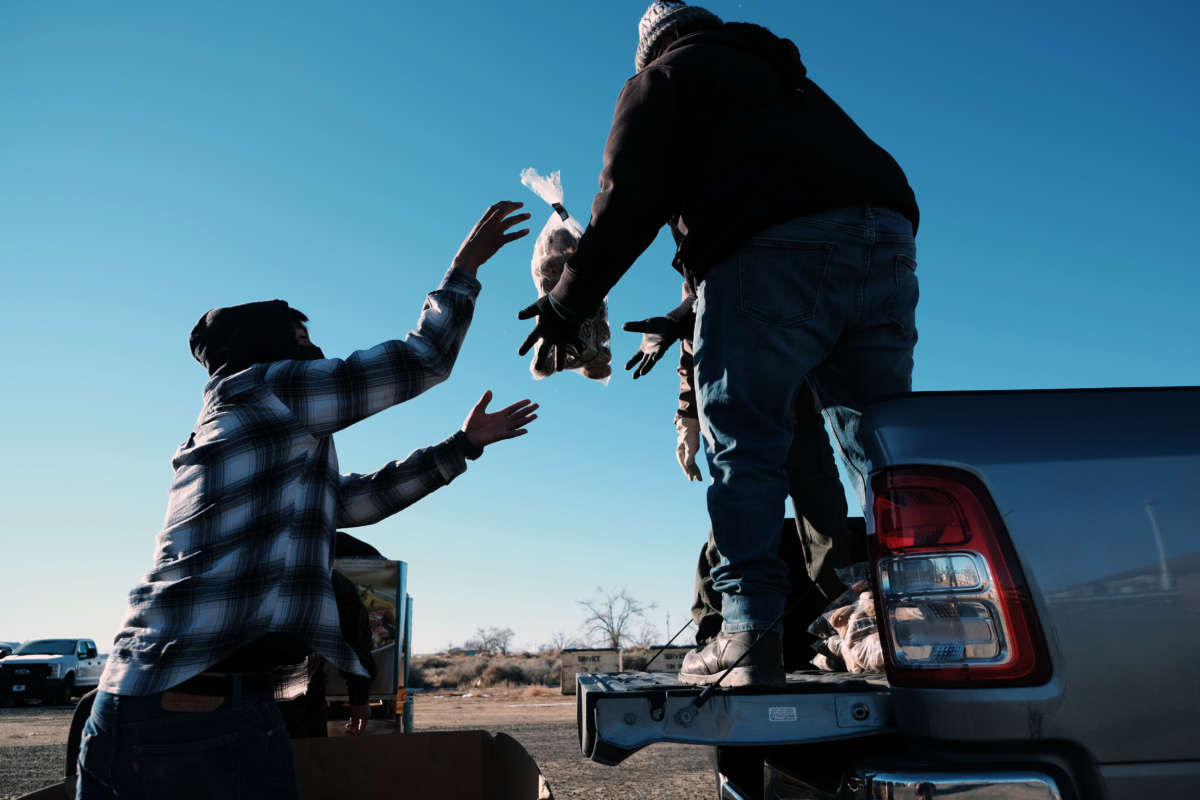The headlines last week after the release of data from the Bureau of Labor Statistics told one story. “Stunning jobs report,” said Politico. CNBC said the report showed a “surprisingly powerful gain.” And CNN added this take: “Here’s what makes the jobs report ‘shocking.’”
Even President Joe Biden celebrated. “This morning’s report caps off my first year as president,” he said. “And over that period, our economy created 6.6 million jobs — 6.6 million jobs. If you can’t remember another year when so many people went to work in this country, there’s a reason: It never happened.”
But for Indigenous people, the numbers show that the labor market is leaving Indigenous people behind, according to a new report from the Brookings Institution.
“While the nation’s topline unadjusted unemployment rate was 4.4% in January, the unemployment rate among Native American workers was an extraordinarily high 11.1%,” write Robert Maxim, Randall Akee and Gabriel R. Sanchez. “Nearly two years into the recovery, Native American workers are contending with a labor market that would be considered catastrophic if it was reflective of the full economy.”
But the report is also striking because the data is now available.
“It was the first time, in my opinion, a historic data release,” said Maxim, a senior research associate at Brookings in Washington, D.C. and a citizen of the Mashpee Wampanoag Tribe.
Every month the Bureau of Labor Statistics releases its report on labor but does not contain any information on Native American workers. That means there was a gap in how the economy was working because it excluded Native people in general.
“I think that largely left us out of the discussion when it came to how the labor market was doing,” Maxim said.
The Brookings report shows that Native Americans had a higher unemployment rate than other racial groups before the pandemic, “with a 7.5% unemployment rate in February 2020. As the pandemic took hold, the Native American unemployment rate jumped to an astonishing 28.6% — a level comparable to national unemployment during the Great Depression.”
Even with the recovery, Native Americans have an unemployment rate “that’s two and a half times higher than the nation as a whole,” Maxim said. Those could be considered “crisis levels,” he said.
Maxim said one of the goals of the analysis was to highlight the problem of measuring unemployment and to show that “Native people have had a much more difficult time with this pandemic than the United States as a whole.”
The health disparities, magnified by the pandemic, lead to worse economic outcomes. He said: “If you’re not healthy enough to work, if you’re just trying to stay alive, you can’t even think about your economic well being. You’re just trying to survive.”
It’s that very difficulty that shows up in the employment numbers.
Beyond the January employment news, the Brookings piece explores improving the data quality of economic reporting.
“I mentioned in the piece that this data only identifies people that self- identify as American Indian or Alaskan Native alone. And why does that matter? Well, 61 percent of Native people identify as two or more races, it’s the highest of any racial or ethnic group,” Maxim said. “You’re effectively excluding three out of every five Native people in the data about them.”
He said it’s a lot like skipping states and ignoring all of the data.
“People would say that that’s of course not representative,” he said.
That calls for the Census Bureau and the Bureau of Labor Statistics to rethink their data collection. “Now it’s time to kind of ask this broader question about how we as a country think about Native people,” he said.
Join us in defending the truth before it’s too late
The future of independent journalism is uncertain, and the consequences of losing it are too grave to ignore. To ensure Truthout remains safe, strong, and free, we need to raise $43,000 in the next 6 days. Every dollar raised goes directly toward the costs of producing news you can trust.
Please give what you can — because by supporting us with a tax-deductible donation, you’re not just preserving a source of news, you’re helping to safeguard what’s left of our democracy.
